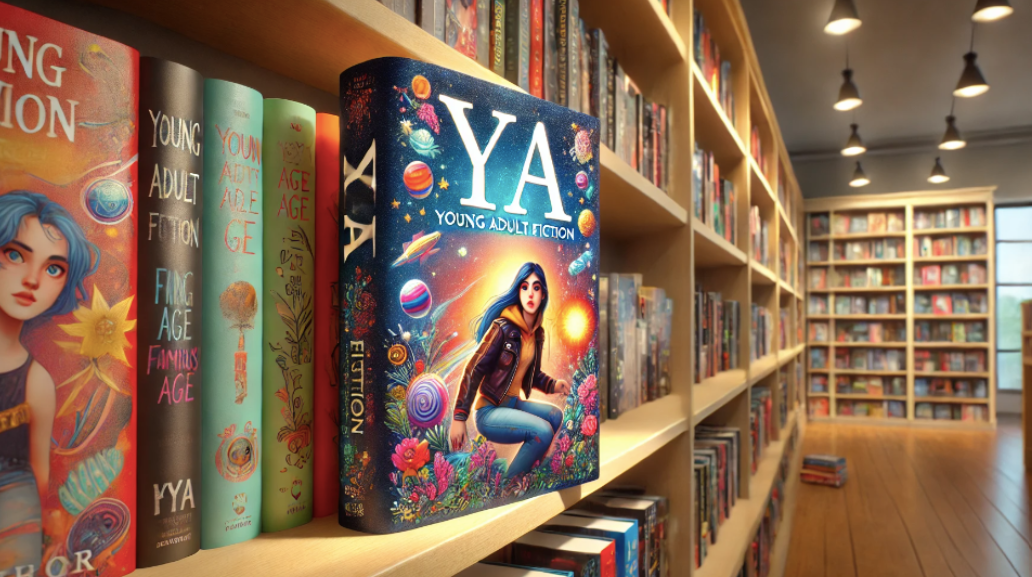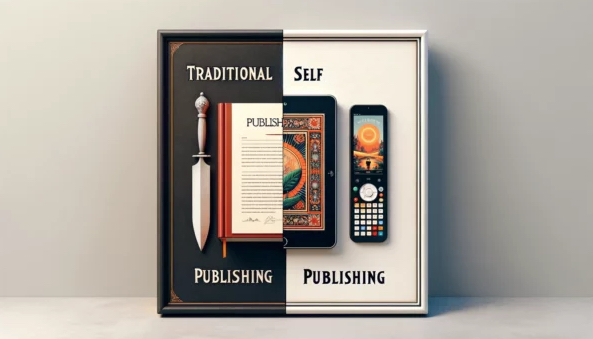Young adult (YA) fiction is one of the most popular and rapidly growing genres, with sales reaching over 30 million copies annually. The rise of self-publishing has empowered new authors to break into this thriving market of young adult fiction books without the need for traditional publishers. Self-publishing allows writers to bypass gatekeepers, offering a faster, more flexible route to publication.
This approach is particularly attractive for YA authors who wish to maintain creative control over their work and directly engage with their audience. By self-publishing, authors can craft their stories exactly as they envision, reach readers more quickly, and build a dedicated fanbase, making it an increasingly popular choice for many in the YA community.
Exploring the Heart of Young Adult Fiction
Young Adult (YA) fiction typically targets readers aged 12 to 18, though its appeal often extends to adults as well. These novels are characterized by themes that resonate with teenagers, such as coming of age, identity exploration, and the struggles of adolescence. Coming-of-age stories, in particular, have a universal appeal, resonating with both young adults and older audiences. The YA genre is known for its broad appeal, attracting not only teen readers but also a significant portion of adult readers.
Key themes in YA fiction include self-discovery, relationships, and overcoming personal challenges, often set against a backdrop of school, family, and social dynamics.
YA books are immensely popular, with annual sales exceeding 30 million copies. This genre’s widespread appeal and commercial success make it a promising avenue for aspiring authors. Whether tackling fantasy, romance, or contemporary issues, YA novels captivate a diverse and dedicated audience, offering significant potential for new writers looking to make their mark.
Preparing Your Manuscript
Crafting a compelling young adult fiction novel starts with writing in a voice and style that resonates with teen readers. Effectively reaching a teen audience involves understanding their preferences and behaviors, particularly in how they discover books. Use authentic dialogue and contemporary language to create a connection with your readers. Avoid talking down to your audience; instead, respect their intelligence and emotional depth. Incorporating humor, emotion, and dynamic pacing can also keep young readers engaged.
Relatable characters and realistic scenarios are essential. Teens seek stories that reflect their own experiences and struggles, whether they’re navigating friendships, facing family issues, or discovering their identities. Your characters should be well-developed, with strengths, flaws, and growth arcs that readers can identify with. Even in fantastical settings, the core emotions and challenges should feel real.
Professional editing is crucial to elevate your manuscript to industry standards. A skilled editor will help refine your narrative, catch inconsistencies, and polish your prose. This step ensures your book is not only free from grammatical errors but also structurally sound and compelling. Investing in professional editing can make the difference between a good book and a great one, enhancing your credibility as an author and increasing your chances of success in the competitive young adult fiction market.
The Self-Publishing Process: Your Path to Independence
Self-publishing and traditional publishing offer distinct pathways for authors. Traditional publishing involves submitting your manuscript to publishers, facing potential rejections, and waiting months or even years for your book to hit the shelves. In contrast, self-publishing allows you to take control of the entire process, from editing to cover design, as well as publish your book on your schedule.
The benefits of self-publishing are numerous. First and foremost, you maintain creative control over your work, ensuring your vision is fully realized. Additionally, self-publishing offers a much faster route to publication, allowing you to release your book as soon as it’s ready. Financially, self-publishing can be advantageous, as you keep a higher percentage of royalties compared to traditional publishing contracts.
Several popular platforms make self-publishing accessible and straightforward. Amazon Kindle Direct Publishing (KDP) is a leading choice, offering a user-friendly interface and extensive reach. Apple Books provides a seamless experience for Mac users and access to a vast audience. IngramSpark is ideal for those wanting high-quality print options and distribution to bookstores. Each platform has its unique features, such as KDP’s promotional tools, Apple Books’ integration with Apple’s ecosystem, and IngramSpark’s superior print-on-demand services.
Choosing self-publishing empowers you to bring your young adult novel to life on your terms, reaching readers worldwide without the hurdles of traditional publishing.
Choosing the Right Self-Publishing Platform for your Young Adult Fiction Book
When it comes to self-publishing, selecting the right platform is crucial. Here’s an overview of some major options:
Amazon Kindle Direct Publishing (KDP): As a leader in the self-publishing industry, KDP offers a user-friendly interface, global reach, and various promotional tools. However, it requires exclusivity for certain benefits and has a crowded marketplace.
Apple Books: This platform integrates seamlessly with Apple’s ecosystem, making it an excellent choice for reaching readers on iOS devices. Apple Books offers a smooth publishing process but may have a smaller market share compared to Amazon.
IngramSpark: Known for its high-quality print-on-demand services and extensive distribution network, IngramSpark allows authors to reach bookstores and libraries. The setup can be more complex and costly compared to other platforms.
Publishing with Spines
Spines is an innovative all-in-one platform designed to modernize the self-publishing process. Utilizing advanced AI technology, Spines streamlines proofreading, formatting, and other tasks, providing full transparency and efficiency. Offering everything you need to publish your book, from cover design and editing to distribution and marketing, an easy-to-use platform is provided to self-publish your book. Spines combines technology with human expertise to ensure high-quality standards, enabling book publication in as little as 30 days.
Despite being a newcomer, Spines has earned a 4.6-star rating on Trustpilot and publishes an average of 5 books per day, making them a rising force in the industry. For authors seeking a simplified, tech-savvy approach, Spines offers a compelling alternative.
Comparison of Publishing Companies
Each platform has its own set of advantages and disadvantages. Amazon KDP’s vast reach is balanced by the need for exclusivity. Apple Books offers seamless integration but with potentially smaller market penetration. IngramSpark’s extensive distribution comes at a higher complexity and cost. Meanwhile, Spines stands out with its innovative blend of AI and expert insights, providing a modern, efficient solution for self-publishing.
By carefully considering these options, authors can choose the platform that best fits their needs and goals, setting their young adult novels up for success.
Cover Design and Formatting
Professional Design: A professionally designed book cover is crucial in attracting readers. The cover is often the first impression potential readers have of your book, and a well-crafted design can significantly increase its appeal. Investing in professional cover design ensures your book looks polished and credible, standing out in a competitive market.
Engaging Art: To create cover art that stands out in the YA market, focus on visually appealing and relevant imagery. Use vibrant colors, dynamic fonts, and eye-catching graphics that reflect the themes and tone of your book. Incorporate elements that resonate with YA readers, such as contemporary styles, relatable characters, and genre-specific motifs. It’s also helpful to research current trends in YA cover design to ensure your book looks modern and appealing.
Formatting: Proper formatting is essential for both print and digital versions of your book. For print, ensure your manuscript is correctly formatted with appropriate margins, font sizes, and chapter headings. For digital versions, use eBook-friendly formats like EPUB or MOBI and ensure that the text flows smoothly on various devices. Utilize formatting tools or professional services to ensure your manuscript looks polished and professional, enhancing the overall reading experience.
Print on Demand and Physical Books
Print on Demand: Print on demand (POD) allows authors to print copies of their book only when an order is placed, eliminating the need for large print runs and reducing upfront costs. This model is highly efficient and minimizes waste, making it an ideal choice for self-published authors.
Benefits: Offering physical books alongside digital versions caters to readers who prefer tangible copies, enhancing your market reach. Physical books can also be used for promotional events, book signings, and giveaways, further boosting your visibility and credibility as an author.
Services: Popular print-on-demand services include CreateSpace (now part of Amazon KDP) and IngramSpark. CreateSpace provides easy integration with Amazon’s distribution network, while IngramSpark offers high-quality printing and extensive distribution options to bookstores and libraries, making both excellent choices for self-publishing authors.
Marketing Your YA Fiction Book
Marketing Plan: Creating an effective marketing plan tailored to YA readers starts with understanding your target audience. Identify where your readers spend their time online and what types of content they engage with. Outline clear goals, such as building a social media following, generating book reviews, and driving sales. Set a timeline for your marketing activities, from pre-launch buzz to post-launch promotions.
Strategies: Utilize social media marketing to connect with YA readers. Platforms like Instagram and TikTok are particularly popular among teens and young adults. Create engaging content, such as book teasers, character interviews, and behind-the-scenes looks at your writing process. Participate in book blog tours to reach a wider audience and gain valuable reviews. Leverage YA book communities on platforms like Goodreads to engage with readers and encourage reviews and ratings. At Spines, we offer a comprehensive marketing toolkit to guide you through these strategies and help you effectively promote your book.
Social Media: Social media platforms are vital for reaching YA readers. Instagram allows you to share visually appealing content and connect with bookstagrammers who can help promote your book. TikTok, with its vibrant #BookTok community, offers a space to create short, engaging videos that can go viral. Goodreads is essential for building your author profile, connecting with readers, and collecting reviews. Regularly engage with your audience on these platforms to build a loyal following and drive interest in your book.
By implementing these strategies and utilizing tools like those offered by Spines, you can effectively market your young adult fiction book and reach your target audience.
Your Journey to Young Adult Fiction Publishing Success
In this guide, we’ve explored the essential steps to self-publishing your young adult fiction book, from understanding the genre to choosing the right platform and marketing your novel. Self-publishing empowers you with creative control and direct access to your audience, offering a rewarding alternative to traditional publishing.
Aspiring YA authors; now is the time to take the plunge and bring your stories to life. The tools and resources are at your fingertips, making it easier than ever to publish your book.
Start your self-publishing journey today, and unlock the potential for success and fulfillment that awaits you in the young adult fiction market.







